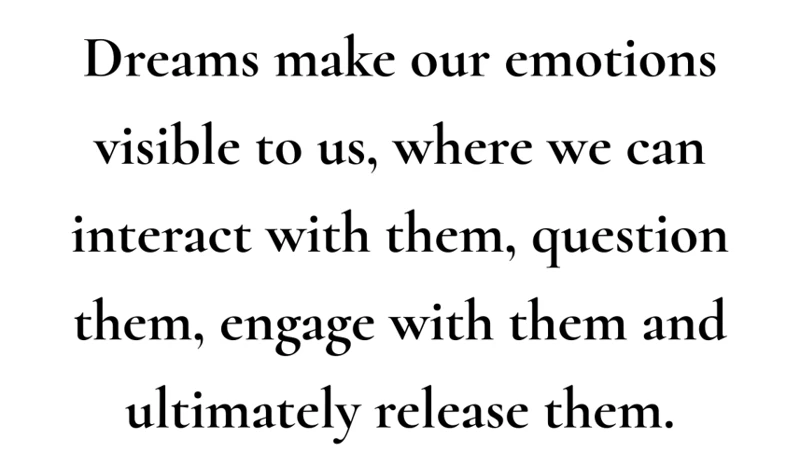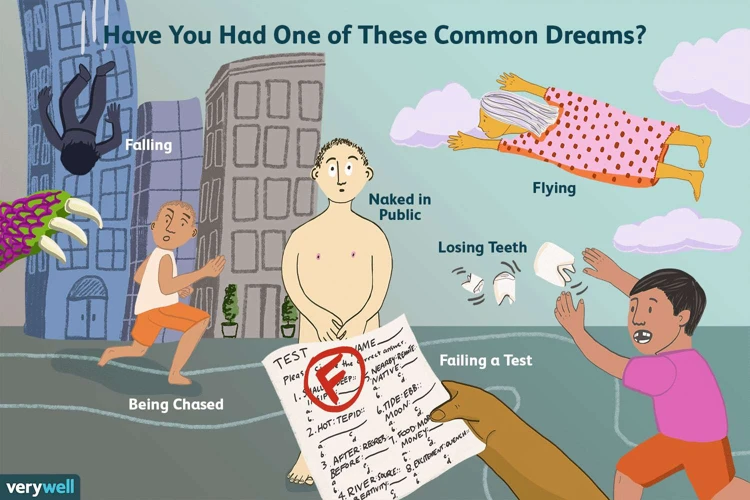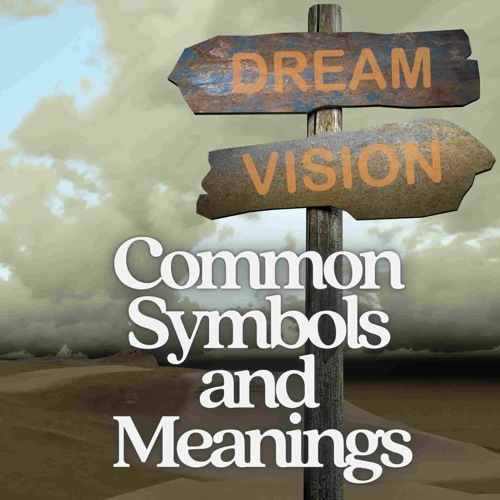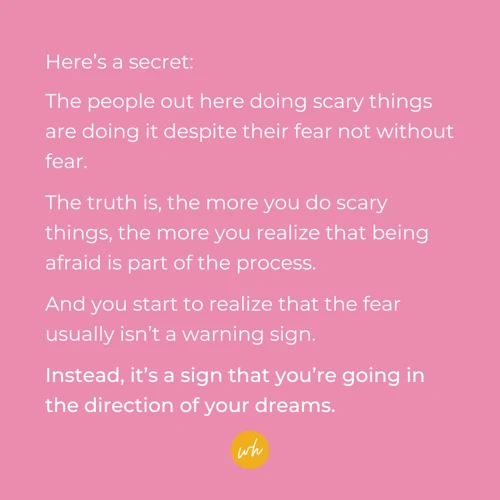Many of us have experienced the mysterious world of dreams, where our subconscious mind weaves together narratives and symbols that can sometimes leave us puzzled. One symbolism that frequently appears in dreams is hiding. The act of hiding in dreams can be perplexing and often leaves us questioning its meaning. In this article, we will explore the various aspects of hiding in dreams, from its origins in the intricacies of the subconscious mind to its symbolic representation. We will also delve into common symbols associated with hiding and how to interpret these dreams. Additionally, we will discuss the potential meanings behind hiding in dreams and provide practical steps to address fear and insecurity. So, let’s embark on a journey of deciphering the symbolism of hiding in dreams and unravel the secrets that lie within our subconscious minds.
Why Do We Hide in Dreams?

The act of hiding in dreams is a fascinating phenomenon that taps into the depths of our subconscious mind. The Intricacies of the Subconscious Mind play a significant role in why we hide in our dreams. Our subconscious is a complex tapestry of thoughts, desires, fears, and memories that sometimes manifest in the form of hiding. It is believed that our dreams serve as a window to our innermost thoughts and emotions, allowing us to process and make sense of them. Hiding in dreams may be a way for our subconscious to shield certain aspects of ourselves from the conscious mind, creating a sense of mystery and intrigue. Another factor contributing to the act of hiding is The Manifestation of Fears and Insecurities. Just like in our waking lives, our dreams can be influenced by our fears and insecurities. These emotions can manifest as the need to hide, seeking protection from potential harm or judgment. Understanding why we hide in dreams requires delving into the intricate workings of the human mind and deciphering the symbolism embedded within our subconscious thoughts.
For more information on interpreting the meaning of dreams, you can read our article on interpreting the meaning of driving dreams.
The Intricacies of the Subconscious Mind
The intricacies of the subconscious mind are a fascinating realm to explore when it comes to understanding why we hide in our dreams. Our subconscious is like a vast ocean, containing the hidden depths of our thoughts, emotions, and experiences. It is a place where our true selves reside, often hidden from our conscious awareness. Our dreams act as a portal into this mysterious realm, allowing glimpses of our subconscious desires, fears, and aspirations. When we hide in our dreams, it is often a reflection of the complex interplay between our conscious and subconscious minds.
Dreams provide an opportunity for our subconscious to communicate with us, using symbolic language to convey its messages. Hiding can represent a multitude of meanings in this symbolic language. It may symbolize a desire to withdraw and protect ourselves, shielding vulnerable emotions or aspects of our identity from the outside world. Alternatively, it could indicate a need for privacy or a reluctance to reveal our true thoughts and feelings.
The act of hiding in dreams can be seen as a manifestation of our subconscious’s attempt to reconcile conflicts or unresolved issues. It might signify a fear of judgment or rejection, stemming from past experiences or insecurities. By exploring these hidden desires, fears, and insecurities, we can gain valuable insight into our subconscious processes and uncover aspects of ourselves that may require healing or exploration.
Understanding the intricacies of the subconscious mind can aid in unraveling the meaning behind why we hide in our dreams. It is important to approach these dreams with curiosity and open-mindedness, allowing ourselves to delve deep into our psyche. By analyzing the symbolism, emotions, and associations linked to hiding in dreams, we can gain a greater understanding of ourselves and the underlying psychological factors at play.
For more information on analyzing the significance of dreams, you can read our article on the significance of swimming dreams.
The Manifestation of Fears and Insecurities
The manifestation of fears and insecurities in dreams is a significant aspect of why we hide within our dreamscapes. When we dream, our subconscious mind often brings to the surface unresolved emotions and anxieties that we may not be fully aware of in our waking lives. These fears and insecurities find their way into our dreams, taking shape through the act of hiding. Hiding in dreams can be seen as a symbolic representation of our desire to protect ourselves from perceived threats or vulnerabilities. For example, if we have a fear of judgment or rejection, we may dream of hiding from a critical audience or concealing our true selves. Insecurities about our appearance or abilities may lead to dreams in which we hide behind masks or disguises to avoid scrutiny or failure. The act of hiding in dreams often reflects our subconscious need for safety and self-preservation in the face of these fears and insecurities. By exploring and analyzing the symbolism of hiding in dreams, we can gain valuable insights into our deepest fears and work towards overcoming them. For further information on the symbolism of fighting dreams, you can read our article on the symbolism of fighting dreams.
Types of Hiding in Dreams

When it comes to hiding in dreams, there are different types that manifest in various ways. Physical Hiding is one type where the dreamer may find themselves physically concealing their presence or whereabouts. This could involve finding a hiding spot, such as behind a door or under a bed, to avoid being seen or discovered. Another type is Symbolic Hiding, where the act of hiding takes on a metaphorical meaning. In symbolic hiding dreams, the dreamer may not be physically hiding, but rather suppressing certain aspects of themselves or concealing their true emotions behind a facade. These types of hiding in dreams can vary in intensity and symbolism, providing valuable insights into the subconscious mind and the emotions and fears that may need attention or exploration.
Physical Hiding
When it comes to hiding in dreams, one common manifestation is physical hiding. This occurs when we find ourselves seeking refuge or concealing our presence in the dream world. Physical hiding can take various forms and scenarios, each carrying its own unique symbolism. Here are a few examples:
- Hiding in a Closet: Finding oneself hiding in a closet may signify a desire to retreat from the outside world. It could represent a need for privacy, a longing for solitude, or a desire to keep certain aspects of oneself hidden from others.
- Under a Bed: Dreaming of hiding under a bed can symbolize a deep need for security and protection. It may signify a fear of confrontation or a desire to escape from a threatening situation.
- Behind a Tree or Wall: Seeking refuge behind a tree or wall in a dream can represent a need for emotional or physical barriers. It may reflect a desire to shield oneself from criticism, judgment, or potential harm. This type of hiding can also suggest the need for boundaries in personal relationships.
In physical hiding dreams, it is essential to consider the specific details and emotions associated with the hiding scenario. These additional factors can provide further insights into the underlying meaning and personal significance of the dream.
Symbolic Hiding
Symbolic hiding in dreams goes beyond the physical act of concealing oneself and delves into the metaphorical realm of representation. It involves the use of symbols to convey deeper meanings and emotions. Here are some key aspects of symbolic hiding in dreams:
1. Metaphorical Representation: Symbolic hiding often represents aspects of ourselves or situations in our lives that we wish to keep hidden or avoid. It could be a reflection of our fears, insecurities, or even secrets that we are reluctant to confront or share with others.
2. Inner Conflict: Symbolic hiding can also symbolize inner conflicts or contradictions within ourselves. It may indicate a struggle between different aspects of our personality, where we hide certain traits or desires due to societal expectations or personal insecurities.
3. Emotional Protection: Hiding in dreams can be a symbolic representation of our need for emotional protection. It may suggest that we are trying to shield ourselves from potential emotional pain, rejection, or vulnerability. This could be a reflection of past experiences or current situations where we feel the need to guard ourselves.
4. Desire for Privacy: Symbolic hiding can also reflect a desire for privacy or solitude. It may be an indication that we crave personal space or time away from the demands and expectations of others. This can be a healthy expression of self-care and the need to recharge.
5. Avoidance and Denial: Symbolic hiding may be a manifestation of our tendency to avoid or deny certain aspects of ourselves or our lives. It could be a subconscious defense mechanism that prevents us from facing uncomfortable truths or taking necessary action.
Symbolic hiding in dreams involves the use of symbols to represent deeper meanings and emotions. It can signify our fears, insecurities, inner conflicts, and the need for emotional protection or privacy. Understanding the symbolic nature of hiding in dreams allows us to uncover hidden messages from our subconscious and gain insights into our inner world.
Common Symbols Associated with Hiding

When it comes to the symbolism of hiding in dreams, there are several that often appear. One of these symbols is The Dark or Shadowy Figure. This figure represents the unknown and can evoke feelings of fear and apprehension, prompting the dreamer to seek shelter and concealment. Another symbol is The Disguise or Mask. In dreams, wearing a disguise or mask suggests a desire to conceal one’s true self or intentions, possibly due to feelings of vulnerability or a need to fit in. Additionally, The Concealed Room or Space symbolizes a hidden part of oneself or secrets that are being kept. The presence of these symbols associated with hiding in dreams adds layers of complexity to their interpretation, inviting us to delve deeper into the hidden recesses of our subconscious mind and unravel the messages they may hold.
The Dark or Shadowy Figure
The presence of a dark or shadowy figure in dreams is a common symbol associated with hiding. This figure often represents our deepest fears, anxieties, or aspects of ourselves that we try to conceal. can take various forms, such as a faceless silhouette, a lurking entity, or a menacing presence. It is often accompanied by a sense of unease or impending danger, evoking a primal instinct to hide and protect oneself. This symbolic figure may embody suppressed emotions, unresolved traumas, or repressed aspects of our personality that we are unwilling to confront in our waking lives. The appearance of the dark or shadowy figure in dreams serves as a reminder that there are hidden aspects within us that need acknowledgment and integration. By unraveling the symbolism of this figure, we can gain insights into the parts of ourselves that we may be hiding or denying, allowing us to embark on a journey of self-discovery and healing.
The Disguise or Mask
The disguise or mask is a powerful symbol associated with hiding in dreams. When the disguise or mask appears in our dreams, it represents a desire to conceal our true selves or emotions. is often used as a defense mechanism to protect ourselves from vulnerability or judgment. It reflects the need to wear a facade or adopt a different persona in order to navigate certain situations or relationships. In dreams, disguises or masks can take various forms, such as wearing a literal mask or altering our appearance in some way. These symbols signify a fear of being seen as we truly are, perhaps due to feelings of inadequacy or fear of rejection. The disguise or mask in dreams encourages us to examine the parts of ourselves that we may be hiding from others, and even from ourselves. It prompts us to question the authenticity of our actions and behaviors. By recognizing and confronting these hidden aspects, we can begin to cultivate a deeper sense of self-acceptance and embrace our true identity. Understanding the symbolism of the disguise or mask in dreams allows us to unravel the layers of our hidden selves and embark on a journey towards authenticity.
The Concealed Room or Space
The concealed room or space is a powerful symbol that often appears in dreams where hiding is prevalent. This symbol represents a hidden aspect of oneself or a secret that is kept locked away. When encountering a concealed room or space in a dream, it signifies that there is something within us that we are consciously or unconsciously hiding from others or even from ourselves. This hidden aspect could be an unexpressed talent or desire, a repressed memory, or a deep-seated fear. The room or space itself may vary in size, appearance, and location, but it always serves as a metaphorical representation of this hidden aspect. It could be a small, cramped room tucked away in the depths of a house, or a vast, labyrinthine space undiscovered by anyone else. Exploring this concealed room or space in dreams can be a journey of self-discovery and the first step towards acknowledging and addressing the hidden aspects of our lives. By shining a light on this symbol, we can begin to unlock the doors of our subconscious and integrate these hidden elements into our conscious awareness.
For more insights into dream symbolism, you can read our article on analyzing the significance of swimming dreams.
Interpreting Hiding Dreams

When it comes to interpreting hiding dreams, there are a few key factors to consider. Firstly, it is important to Consider Personal Context. Reflect upon your own experiences, emotions, and circumstances to gain insights into the hidden symbolism of your dreams. Keep a dream journal and jot down any relevant information that comes to mind. Secondly, Analyze Associated Emotions. Emotions play a vital role in dream interpretation. Pay attention to how you feel during the dream and upon waking up. Are you feeling anxious, scared, or relieved? These emotions can provide clues to the underlying meaning of the dream. Lastly, Reflect on Current Life Situations. Dreams often serve as a reflection of our waking lives. Analyze any parallel situations or challenges you may be facing and see if there is a connection to the act of hiding in your dream. By carefully considering personal context, analyzing emotions, and reflecting on your current life circumstances, you can begin to decipher the hidden messages behind your hiding dreams.
Consider Personal Context
When interpreting dreams about hiding, it is crucial to consider the personal context in which the dreams occur. Dream symbolism can vary greatly from person to person, as our experiences, beliefs, and memories shape the way we perceive and interpret things. Take into account the specific details of the dream, such as the location, people involved, and the emotions experienced during the dream. Reflection on your current life situations is essential for understanding the underlying meaning of hiding in your dreams. Ask yourself if there are any situations in your waking life where you feel the need to conceal or protect certain aspects of yourself. Is there a relationship, a job, or a personal challenge that evokes feelings of insecurity or fear? Analyzing these personal factors will provide valuable insights into the symbolism of hiding in your dreams. Consider any recurring themes or patterns in your dreams of hiding. Are there any common triggers or events in your waking life that seem to be connected to these dreams? By considering your personal context and reflecting on how it intertwines with the symbolism of hiding, you can unlock a deeper understanding of the messages your dreams are trying to convey.
Analyze Associated Emotions
When deciphering the symbolism of hiding in dreams, it is crucial to . Emotions play a significant role in understanding the meaning behind our dreams, including the act of hiding. Here are some steps to help you analyze the emotions associated with hiding in your dreams:
1. Identify the emotions: Reflect on the emotions you experienced during the dream. Were you feeling afraid, anxious, or vulnerable? Take note of the dominant emotions that surfaced while you were hiding.
2. Explore the intensity: Consider the intensity of these emotions. Were they mild or overwhelming? The intensity can give you insights into the importance of the dream and the underlying emotions it represents.
3. Connect with personal experiences: Analyze whether the emotions relate to any recent or past events or situations in your life. It could be a reflection of a current challenge, unresolved conflict, or unexpressed emotions.
4. Reflect on recurring patterns: If hiding in dreams is a recurring theme, examine if the associated emotions are consistent. This may indicate unresolved issues or ongoing fears that need attention.
5. Consider symbolic connections: Emotions linked to hiding can have symbolic meanings. For example, feeling fear while hiding could represent a desire to escape from a difficult situation, while feeling relief may indicate a need for solitude or protection.
By carefully analyzing the emotions associated with hiding in your dreams, you can gain valuable insights into your subconscious fears, desires, and unresolved emotions. This analysis will aid you in interpreting the overall message and significance of your dreams.
Reflect on Current Life Situations
When interpreting the symbolism of hiding in dreams, it is crucial to . Our dreams often act as reflections of our waking life experiences and emotions. Examining the circumstances we find ourselves in can provide valuable insights into the meaning behind our hidden dreams. Start by considering any recent events or challenges you have encountered. Has there been a situation where you felt the need to hide or conceal certain aspects of yourself? Reflect on the emotions you experienced during those moments of hiding. Were you feeling overwhelmed, threatened, or insecure? By connecting the themes in your dreams to the events and emotions in your waking life, you can begin to unravel the hidden messages your subconscious is trying to convey.
To help organize your thoughts, you can create a list or table to jot down significant life situations and the corresponding emotions associated with them. This visual representation can aid in identifying patterns or correlations between your dreams and real-life experiences. Additionally, consider any unresolved conflicts or unexpressed feelings that may be contributing to the symbolism of hiding in your dreams. Reflecting on your current life situations will provide valuable context and assist in decoding the underlying messages and meanings behind your dreams of hiding.
Potential Meanings of Hiding in Dreams

When it comes to the potential meanings of hiding in dreams, the possibilities are vast and varied. Avoidance and Escapism can be one interpretation of hiding in dreams. It may reflect a subconscious desire to avoid difficult situations or emotions in our waking lives. Hiding can serve as a temporary escape from the challenges we face. On the other hand, hiding in dreams can also represent Protection and Self-Preservation. It may symbolize our innate instinct to shield ourselves from potential harm or danger. Hiding can be seen as a way to safeguard our well-being and maintain a sense of security. Additionally, hiding in dreams may indicate Suppressed Aspects of Self. It could represent parts of our personality or desires that we intentionally or unconsciously keep hidden from others. Understanding the potential meanings behind hiding in dreams requires careful reflection and introspection to unravel the symbolism embedded within our subconscious minds.
Avoidance and Escapism
are common themes associated with hiding in dreams. When we hide in our dreams, it can signify a desire to escape from something or avoid a particular situation or person. This act of hiding may indicate a subconscious need to retreat from responsibilities, challenges, or confrontations that we find overwhelming or uncomfortable. It could be a symbol of our tendency to avoid difficult emotions or unresolved issues in our waking lives. Hiding in dreams can serve as a coping mechanism, allowing us to temporarily detach from reality and seek solace in the depths of our subconscious mind. It is essential to reflect on the specific context of the dream and analyze associated emotions to gain a deeper understanding of what we may be trying to escape or avoid. By addressing these underlying feelings and concerns in our waking lives, we can work towards personal growth and resolution, ultimately reducing the need for avoidance and escapism in our dreams and reality.
Protection and Self-Preservation
The symbolism of hiding in dreams often revolves around the theme of protection and self-preservation. When we encounter situations in our dreams where we are hiding, it may reflect our innate instinct to shield ourselves from potential harm or danger. This could stem from fears and insecurities that we experience in our waking lives. Hiding in dreams can be seen as our subconscious mind’s way of creating a safe space for us, allowing us to retreat from threats and find solace in the shadows. This form of self-preservation suggests that we may be feeling vulnerable or overwhelmed in our day-to-day lives, prompting our subconscious to create scenarios where we seek protection. It is essential to pay attention to the emotions associated with these hiding dreams, as they can provide valuable insights into the sources of our fears and insecurities. By recognizing and addressing these emotions, we can begin to cultivate a sense of safety and self-confidence, ultimately fostering a more resilient and empowered mindset.
Suppressed Aspects of Self
When exploring the symbolism of hiding in dreams, one important aspect to consider is the idea of suppressed aspects of self. Dreams, as reflections of our subconscious mind, can often reveal hidden or suppressed parts of our personality, thoughts, or desires. The act of hiding in dreams can symbolize these suppressed aspects that we may be consciously or unconsciously trying to avoid or ignore. This can include aspects of ourselves that we find unacceptable, shameful, or vulnerable.
Suppressed aspects of self can manifest in various ways in our dreams. For example, hiding may represent parts of our personality that we feel the need to conceal from others, such as our true emotions, desires, or insecurities. It could be a reflection of our fear of judgment or rejection if these hidden aspects were to be exposed.
Hiding in dreams can also be a representation of past traumas or unresolved issues that we have suppressed. These suppressed aspects may be memories or experiences that are too painful or distressing to confront in our waking life. Our subconscious mind may use the act of hiding as a defense mechanism to shield us from these painful memories, allowing us to process them at our own pace.
Exploring and addressing these suppressed aspects of self is crucial for personal growth and self-discovery. By acknowledging and accepting these hidden parts, we can begin the process of healing and integration. Journaling, therapy, or self-reflection exercises can be useful tools to delve deeper into these suppressed aspects and understand their significance.
It is important to note that interpreting the meaning behind hiding in dreams and uncovering suppressed aspects of self requires individual reflection and introspection. Dreams are highly personal, and what may resonate as a symbol of suppression for one person may hold a different meaning for another. Taking the time to reflect on and explore these suppressed aspects can lead to a deeper understanding of ourselves and ultimately promote personal growth and self-acceptance.
Addressing Fear and Insecurity

Addressing fear and insecurity is crucial when it comes to understanding the symbolism of hiding in dreams. Face Your Fears is an essential step towards overcoming them. By actively confronting the fears that trigger the hiding symbolism in our dreams, we can begin to dismantle their power over us. Whether through therapy, self-reflection, or gradual exposure, facing our fears helps us gain a sense of control and empowerment. Build Self-Confidence is another important aspect of addressing fear and insecurity. By cultivating self-belief and acknowledging our strengths, we can boost our confidence and reduce the need to hide. This can be achieved through positive affirmations, setting achievable goals, and surrounding ourselves with supportive individuals. Taking the courageous step to face our fears and building self-confidence allows us to break free from the cycle of hiding and embrace a more fulfilling and authentic life.
Face Your Fears
Facing our fears is a crucial step in addressing the symbolism of hiding in dreams. When we hide in our dreams, it often represents a subconscious avoidance of something we fear or find challenging in our waking lives. By acknowledging and confronting these fears, we can begin to unravel their grip on our subconscious mind. Here are some steps to help you face your fears:
1. Identify Your Fears: Take the time to reflect on the specific fears that might be underlying your hiding dreams. Are you afraid of failure, rejection, or judgment? Understanding the root causes of your fears will allow you to address them more effectively.
2. Start Small: Rather than diving headfirst into your biggest fear, begin by taking small steps towards facing it. Break down your fear into manageable tasks or situations that gradually expose you to what you’re afraid of. This incremental approach can increase your confidence and resilience.
3. Seek Support: Facing fears can be challenging, and it’s important to have a support system in place. Share your fears with a trusted friend, family member, or therapist who can provide guidance, encouragement, and empathy along the way.
4. Practice Mindfulness: Cultivate mindfulness techniques such as deep breathing, meditation, or visualization to calm your mind and reduce anxiety when confronting your fears. Mindfulness can help you stay focused and present, enabling you to face your fears more effectively.
5. Take Action: It’s not enough to simply acknowledge your fears; it’s crucial to take action and actively challenge them. Engage in activities or situations that push you out of your comfort zone and allow you to confront your fears head-on. Remember, growth and personal development often happen outside of our comfort zones.
By facing your fears in both your dreams and waking life, you can gradually overcome the need to hide and embrace a bolder, more confident version of yourself. It may not be easy, but the process of facing and conquering your fears can lead to personal growth and transformation.
Build Self-Confidence
Building self-confidence is essential when it comes to addressing the underlying fears and insecurities that may lead to hiding in dreams. Here are some effective strategies to build self-confidence:
1. Practice self-affirmation: Engage in positive self-talk and affirmations. Remind yourself of your strengths, accomplishments, and abilities.
2. Set achievable goals: Break down your larger goals into smaller, manageable tasks. Accomplishing these smaller goals will boost your confidence and provide a sense of accomplishment.
3. Step out of your comfort zone: Challenge yourself to try new things and take calculated risks. Stepping out of your comfort zone allows you to expand your capabilities and build resilience.
4. Celebrate your successes: Acknowledge and celebrate your achievements, no matter how small they may seem. This reinforces a positive self-image and encourages further growth.
5. Embrace failure as an opportunity for growth: Understand that failure is a natural part of life. Instead of allowing setbacks to diminish your confidence, view them as valuable learning experiences that contribute to personal growth.
6. Practice self-care: Taking care of your physical, emotional, and mental well-being is crucial for building self-confidence. Prioritize activities that promote self-care, such as exercise, getting enough rest, and engaging in hobbies that bring you joy.
7. Seek support: Surround yourself with a supportive network of friends, family, or a mentor who believe in you and encourage your growth. Their encouragement and positive feedback can help boost your confidence.
Remember, building self-confidence is a gradual process. Be patient with yourself and celebrate each step you take towards developing a stronger sense of self-assurance.
Embracing Authenticity and Vulnerability
Embracing authenticity and vulnerability is a crucial aspect of personal growth and self-discovery. In the realm of dreams, Practicing Self-Acceptance is essential when it comes to understanding the symbolism of hiding. Hiding in dreams often signifies a desire to conceal certain aspects of ourselves due to fear of judgment or rejection. By embracing our authentic selves, we can begin to overcome these fears and let go of the need to hide. Additionally, Cultivating Trust in Relationships is vital for unraveling the symbolism of hiding in dreams. Trusting others and allowing ourselves to be vulnerable can help us establish meaningful connections and create a safe space where we no longer feel the need to hide. Embracing authenticity and vulnerability is a powerful journey that can lead to self-fulfillment and personal transformation.
Practice Self-Acceptance
Practicing self-acceptance is a crucial step in embracing authenticity and vulnerability. It involves acknowledging and embracing all facets of ourselves, including our strengths, weaknesses, and imperfections. Here are some strategies to help you cultivate self-acceptance:
- Practice self-compassion: Treat yourself with kindness and understanding, just as you would treat a close friend. When negative thoughts or self-criticisms arise, counter them with self-compassionate statements. Remind yourself that everyone has flaws and makes mistakes.
- Challenge limiting beliefs: Identify the limiting beliefs or negative self-perceptions that are hindering your self-acceptance. Are there unrealistic expectations you have imposed on yourself? Replace these beliefs with more realistic and empowering ones.
- Celebrate your accomplishments: Acknowledge and celebrate your achievements, no matter how small they may seem. Recognize your progress and give yourself credit for the steps you have taken to grow and improve.
- Practice self-care: Taking care of your physical, emotional, and mental well-being is essential for fostering self-acceptance. Prioritize activities that bring you joy, relaxation, and self-nurturing. This can include engaging in hobbies, practicing mindfulness or meditation, or seeking support from loved ones.
- Acknowledge your uniqueness: Embrace the fact that you are a unique individual with your own set of talents, interests, and quirks. Celebrate your individuality and recognize that it is what makes you special.
By practicing self-acceptance, you create a space within yourself where you can be truly honest and authentic. It allows you to let go of the need to hide or conceal parts of yourself, fostering a greater sense of self-love and self-worth. Remember, self-acceptance is an ongoing process, and it requires patience, commitment, and self-reflection.
Cultivate Trust in Relationships
Cultivating trust in relationships is a crucial aspect of embracing authenticity and vulnerability. Trust forms the foundation of healthy and meaningful connections with others. When it comes to hiding in dreams, it may indicate a lack of trust or a fear of vulnerability within relationships. To address this, it is essential to actively work on building trust. Practice Self-Acceptance is the first step towards cultivating trust in relationships. By accepting and embracing our true selves, we become more open and authentic. This self-acceptance allows us to let go of hiding and present our genuine selves to others. Additionally, Communication and Honesty play a pivotal role in building trust. Clear and open communication fosters understanding and transparency, creating an environment of trust and safety. It is important to express our thoughts, needs, and concerns honestly, as well as to listen with empathy and respect. Developing Consistency in our words and actions also contributes to building trust. Being reliable, following through on commitments, and demonstrating consistent behavior builds a sense of reliability and trustworthiness. Lastly, Respecting Boundaries is integral in building trust in relationships. Respecting the boundaries of others and setting our own boundaries promotes a sense of safety and trust. By honoring personal boundaries, we create an environment where trust can flourish. Cultivating trust requires time, effort, and understanding, but the rewards of authentic connections and deeper relationships are well worth it.
Conclusion
In conclusion, the act of hiding in dreams holds a significant symbolic meaning that stems from the intricacies of the subconscious mind. It serves as a manifestation of our fears, insecurities, and the need to protect ourselves. Through the different types of hiding, whether physical or symbolic, our dreams provide us with a rich tapestry of symbols and metaphors to decipher. The common symbols associated with hiding, such as the dark or shadowy figure, the disguise or mask, and the concealed room or space, offer insights into our deepest emotions and experiences. Interpreting hiding dreams requires careful consideration of personal context, associated emotions, and current life situations.
The potential meanings behind hiding dreams can vary from avoidance and escapism to the exploration of suppressed aspects of self. By facing our fears and building self-confidence, we can address and overcome the underlying fears and insecurities represented in these dreams. It is essential to embrace authenticity and vulnerability, practicing self-acceptance and cultivating trust in relationships. The journey of deciphering the symbolism of hiding in dreams allows us to uncover the secrets of our subconscious and gain a deeper understanding of ourselves.
In the end, as we continue to explore the realms of dreams and their hidden meanings, let us remember that they offer us a unique opportunity for self-reflection, growth, and self-discovery. So, embrace the mysteries of your dreams, for they hold the keys to unlocking the hidden depths of your subconscious mind.
Frequently Asked Questions
1. Why do we hide in our dreams?
The act of hiding in dreams is often a manifestation of our subconscious mind processing thoughts, fears, and insecurities. It serves as a way for our subconscious to shield certain aspects of ourselves from our conscious awareness.
2. What are the different types of hiding in dreams?
There are two main types of hiding in dreams: physical hiding, where you physically hide or seek cover, and symbolic hiding, where you may adopt disguises or conceal yourself in various ways.
3. What are some common symbols associated with hiding in dreams?
Common symbols of hiding in dreams include dark or shadowy figures, disguises or masks, and concealed rooms or spaces.
4. How can I interpret the meaning of hiding in my dreams?
To interpret the meaning of hiding in dreams, consider your personal context, analyze the associated emotions, and reflect on your current life situations. This can provide insights into the underlying message or symbolism of your dream.
5. What are some potential meanings of hiding in dreams?
Hiding in dreams can symbolize avoidance and escapism, protection and self-preservation, as well as the presence of suppressed aspects of oneself that need exploration.
6. How can I address fear and insecurity related to hiding in dreams?
To address fear and insecurity, it’s essential to face your fears, build self-confidence, and actively work on embracing authenticity and vulnerability.
7. Can hiding in dreams be a positive symbol?
Hiding in dreams can have both negative and positive connotations. It can symbolize caution, self-preservation, and the need for privacy or solitude, but it can also indicate a desire to avoid challenges or confrontations.
8. Are there any specific techniques to remember and interpret dreams about hiding?
Keeping a dream journal, practicing mindfulness and meditation, and exploring various dream interpretation techniques such as symbolism and free association can help improve dream recall and understanding of hiding dreams.
9. How do hidden secrets or repressed memories relate to hiding dreams?
Hiding dreams may sometimes signify hidden secrets or repressed memories that your subconscious mind is attempting to bring to the surface for acknowledgment and resolution.
10. Can recurrent hiding dreams indicate a deeper psychological issue?
Recurrent hiding dreams may be a sign of unresolved psychological issues or unresolved conflicts. In such cases, it can be beneficial to seek professional support from a therapist or counselor to explore and address these underlying concerns.








